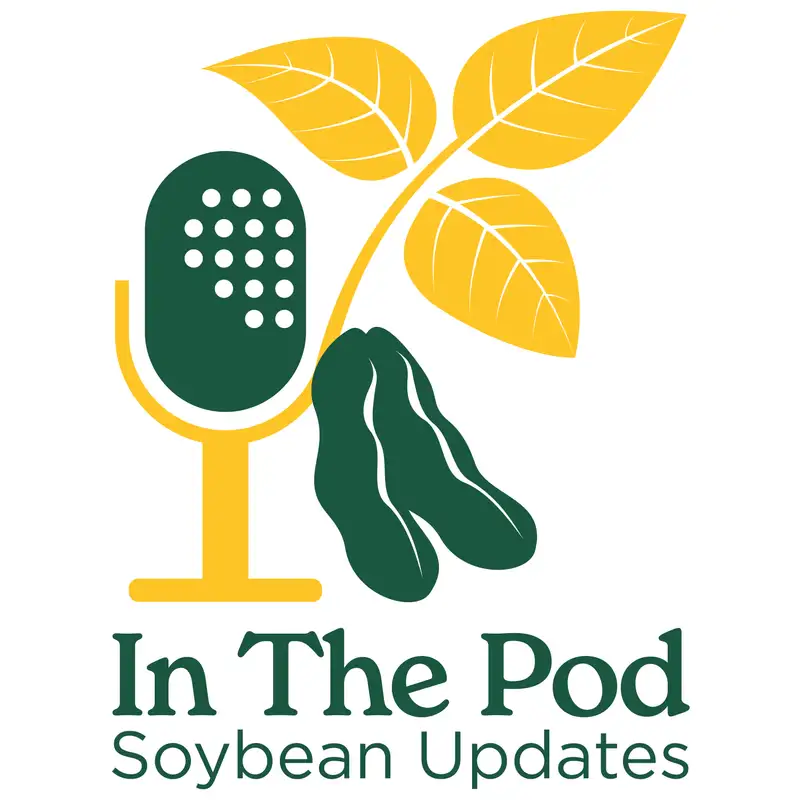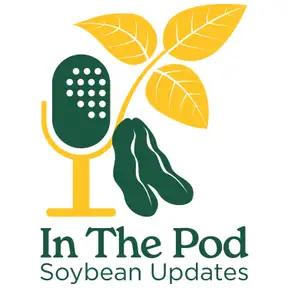06/05/25 Scouting Soybeans: IDC and Aphids
You're listening to In The Pod, soybean updates, a weekly trek into the latest soybean information from NDSU Extension. Soybean farmers have some major challenges with IDC and soybean aphids. The degree of challenge varies throughout North Dakota. Updating us from the Northeast is Anitha Chirumamilla, NDSU Extension cropping system specialist. Anitha, how are the soybeans coming along in your area?
Anitha Chirumamilla:Yes, Bruce. My focus area is in the Northeast Part Of North Dakota. And as many of you know, we are a little behind when compared to the rest of the state in terms of plantings or crop growth. Our soybeans are just popping out from the soil, and the most advanced soybeans that are in our area are at v one to v two stage. That is the only early seeded fields, but the majority of them are just poking out through the ground. Most of them, the stands are looking good. However, there are a few fields or a few areas that are complaining about compaction issues, and the plant stands are not looking good. Rolling the soybean fields is a pretty common practice in this part of the state. And when you do that, like, you know, depending upon the soil texture, the compaction is a problem, and soybean seeds have a tough tough time to poke through the compaction layers or even the crusting issues.
Bruce Sundeen:Pretty much every soybean farmer knows about IDC. How is it in the Northeast?
Anitha Chirumamilla:Yes, Bruce. IDC, which is iron deficiency chlorosis, is common in our region in soybeans. Sometimes when it is too wet, that is when you start seeing the symptoms. And also when the pH of the soil is greater than seven, that is those are those are the areas of the field that will see IDC. Farmers need to scout their fields and look for those issues, and if they have to take any corrective measures. Usually, the most popular management practice for IDC is to select the IDC tolerant variety. And we have NDSU varietal selection table that gives IDC ratings for the varieties. That is always the best practice to manage IDC. However, if you have IDC, there are products like iron chelates, which is ortho ortho that will help the fields to recover.
Bruce Sundeen:Anita, let's talk about the number one pest in soybeans. What's the management strategy?
Anitha Chirumamilla:The number one soybean pest that is in North Dakota is soybean aphid. No doubt about it. Soybean aphid infestations are becoming more frequent every year. It never used to be that way, but now as the soybean acres are growing, this pest is coming more frequent. And in 2017, we confirmed erythroid resistance of soybean aphids in the Northeast part of the state. And this could be because soybean aphids do not overwinter in North Dakota, but they have to migrate from neighboring states. And that is where we are getting these resistant soybean aphids from. You know, farmers definitely need to scout for them starting from the v three to v four stage of soybeans. Because they are migrating from a different state, they are not here very early. So they take the time to come in and their populations. So v three to v four stage is the time to scout. Soybean aphids have a tendency to blow up their populations very rapidly. Frequent scouting is very important to do. When you see the magical number of economic threshold, we call it is two fifty aphids per plant, and 80% of the field has those numbers. And they are at an increasing rate. That is the time you need to spray. And we strongly encourage growers not to go for unnecessary insecticide treatments because we need to conserve the natural enemies. There tons of good bugs out there, like ladybugs and syphilit flies and lacewings. These are very effective predators on these aphids. We need to conserve them. So that's why we want to wait until those populations reach that threshold. Because we have confirmed the pyrethroid resistance, we are asking growers to assume that every year that is what we are going to get. The aphids are going to be pyrethroid resistant. Make sure you are switching to a different mode of action to begin with. And if you have to spray more than once in a season, always rotate the mode of action. There are a few aphid specific products that are very efficient on, aphids, so please use those products.
Bruce Sundeen:Thanks, Anitha. Our guest has been Anitha Chirumamilla, NDSU Extension cropping systems specialist. You're listening to In the Pod, soybean updates, a weekly trek into the latest soybean information from NDSU Extension supported by the North Dakota Soybean Council.

